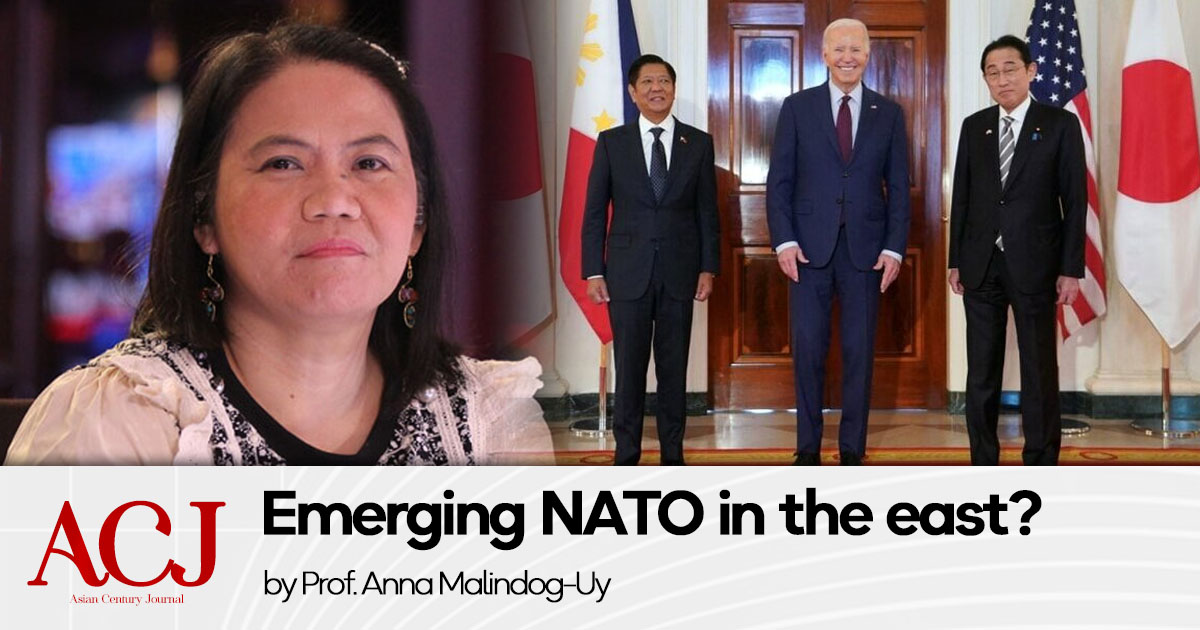
by Adolfo Quizon Paglinawan, Part I
The fulfillment of vibrant and fruitful cooperation between the Philippines and China on fisheries management, protection of marine environment and law enforcement is so close, our President should not wait any longer to shoot an arrow of esteemed friendship across the South China Seas to the people of China, it government, and purposely to both state and private direct investors, and go for it!
We are a small country, but the Philippines has the fifth largest coastline in the world @ 22,548 miles, next to Canada, Indonesia, Norway and Russia and bigger than Japan, the United States and China.
More importantly, we are considered the center of global coral ecosystem biodiversity, because our waters contain almost ten percent of the world’s coral reefs (93% of which exists in our territorial seas, 0-12 nautical miles from shore), and we have large swaths of mangrove forests and more marine protected areas than any other country, equivalent to two percent of the globe, found in 100% of our coastal waters.
The first meeting of China-Philippine Joint Committee on Fishery that was held in Beijing on September 1, 2004 resulted in the signing of the Memorandum of Understanding on Fisheries Cooperation after in-depth discussion on fishing, sea water aquaculture, aquatic product processing and a broad consensus on future cooperation in those fields.
This was elevated to the level of a Joint Commission meeting in Manila on March 30 to April 2, 2005, a step further involving cooperation on fishery investments, research and technology, and safety of property and life at sea.
In the first state visit of the top Chinese leader to the Philippines in 13 years, the Republic of the Philippines and the People’s Republic of China issued a joint statement on a total of 29 cooperation agreements between President Rodrigo Roa Duterte and President Xi Jinping in Manila on November 2018.
One of these agreements reaffirmed the importance of existing Philippines-China bilateral dialogue mechanisms such as Joint Committee on Fisheries, among others, in enhancing understanding, broadening cooperation, and striving for a stronger partnership.
The Philippine must waste no more time being distracted by American propaganda, lawfare and provocation, especially in relation to fishing activities in the South China Seas and the infertile paper tiger that was the ruling of the Permanent Court of Arbitration in July 2016.
Let us instead engage onto the larger picture of ambitious cooperation that will benefit not just the Philippines and China but the entire world.
Situationer
The Philippines’ coastal waters are a life-giving and vital natural resource for the 1.9 million registered small-scale fishers and their families who rely on these waters to provide income and food.
85% of Filipino fisherfolk are coastal, small-scale-fishers catch teeters nearly 50% of the Philippines’ present fisheries subsector production.
But the current condition of fisheries in the Philippines is bleak.
Cristina Yabes, writing for NikkeiAsia, asks: “The paradox is almost unimaginable: How could a people surrounded by so much wealth, and who charter such plentiful tides for a living day and night, be among the archipelago’s poorest of the poor?
“Partly, it is the result of insular policymaking that has paid more attention to land issues.
“Oddly, the Bureau of Fisheries still falls under the purview of the Department of Agriculture, in many ways skewing priorities away from marine resources that should instead be used to uplift the lot of fisher families whose work methods remain primitive.”
We have vast fisheries and aquatic resources that we have not tapped. While we have only 10 million hectares of lands suitable for agriculture out of a land mass of 30 million hectares, we have more than 220 million hectares of territorial waters, including our exclusive and disputed economic zones, 750,000 hectares of inland waters of lakes, rivers and reservoirs) and as we said at the start of this article, a coastline of almost 23,000 miles (36,289 kilometers).
Worse, seemingly impossible just 20 years ago, protein deficiency even among fishing communities is now increasing at an alarming rate. Despite efforts to regulate the fishing industry, open and relatively unregulated access to marine resources has remained the norm.
The local’ reliance on fish-based protein has driven widespread and chronic municipal overfishing, illegal fishing and habitat destruction has led to fish stock decline steadily for decades; they now spend more time at sea, going further and further from home, for smaller and smaller unsustainable yields.

A quick check at the charts immediately exposes obvious points of weaknesses.
Table 1 shows how in a three months comparison, the fish are harvested

This production table clearly points fishing as primarily a community enterprise for food consumption not commercial trade, thus a lack of a real fishing industry in the country, and loss of export opportunities.
Sadly, our fish production has stagnated during the last decades because, as the numbers confirm, we are overfishing in the wrong waters degrading our inland and coastal waters and over-reliant at best utilizing the traditional and indigenous “basnig” system – lift nets operated by a large outrigger boats.

Table 2 also elucidates the lack of predictability by species when comparing the change in the percentiles of the catch from 2020 to 2021 with 2021 to 2022.
Furthermore, 38.1% or nearly 40% of the species harvested are not really fish but seaweeds.
We have not invested in modern vessels and fishing gear to enable our commercial fishing to go far into the deep waters and into our exclusive economic zones and beyond, notably in the uncontested waters of the Benham Rise, below it the south of the Philippine Sea, and the Celebes Sea.
In aquaculture, we have squandered our opportunities in this field for as early as 1967 when the Philippines started to host the Southeast Asian Fisheries Development Center (SEAFDEC) created to ensure the sustainability of fisheries and aquaculture in 11 countries in Southeast Asia.
China is not even a SEAFDEC member, but in aquaculture China’s 2005 reported harvest was already 32.4 million tons, more than 10 times that of the second-ranked nation, India, which reported 2.8 million tons. Even China’s arid Xinjiang province produced 58,835 tons of fish in 2000, 85% of it from aquaculture.

According to Dr. Emil Javier, Philippine National Scientist for contributions in Agriculture, compared to our ASEAN neighbors which have far less fisheries resources than we do, with the exception of course of Indonesia which is archipelagic like the Philippines, our fish exports in 2015 amounted only to $473 million while Vietnam posted $2.6 billion and Thailand $1.7 billion.
A 2020 chart below indicates how rapid Vietnam and Thailand exports, have apparently grown threefold in five years, overtaking Indonesia. The Philippines is not even in the top 12 list.
Indeed, a tall order, but with the solutions proposed in Part II of this paper, that gap can easily be bridged in just one (six-year) term of a Philippine president, and achieving the pole position of at least top five in the succeeding administration.
____________
This is an adaptation of a working paper submitted to the Webinar on Cooperation on Protection of Marine Environment, Fisheries Management and Maritime Law Enforcement, a joint project of Global Governance Institution (GGI), a think tank based in Beijing, and Asian Century Philippines Strategic Studies Institute (ACPSSI), a think tank based in Manila, held via Zoom on August 20, 2022
Adolfo Quizon Paglinawan is Vice President for Internal Affairs of the Manila-based Asian Century Institute for Strategic Studies. He was a Philippine diplomat to Washington DC from 1986 to 1993, and consultant to the Philippine Secretary of Agriculture and Fisheries from 2002 to 2004. He has published three books of contemporary import.
Email: contact@asiancenturyph.com
Facebook: https://www.facebook.com/asiancenturyph/
Twitter: https://twitter.com/AsianCenturyPH





Leave a Reply